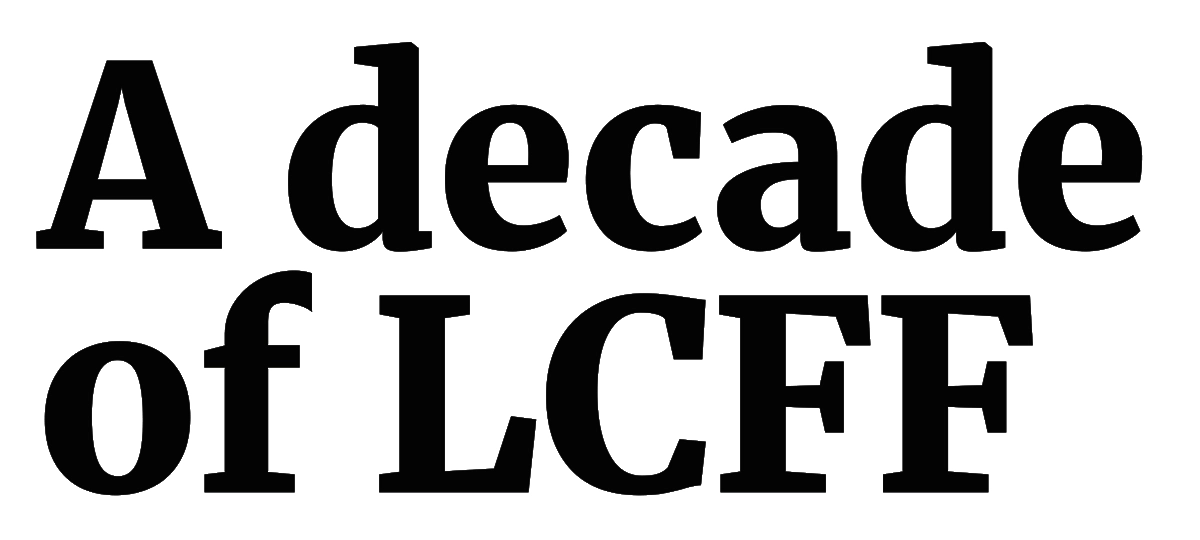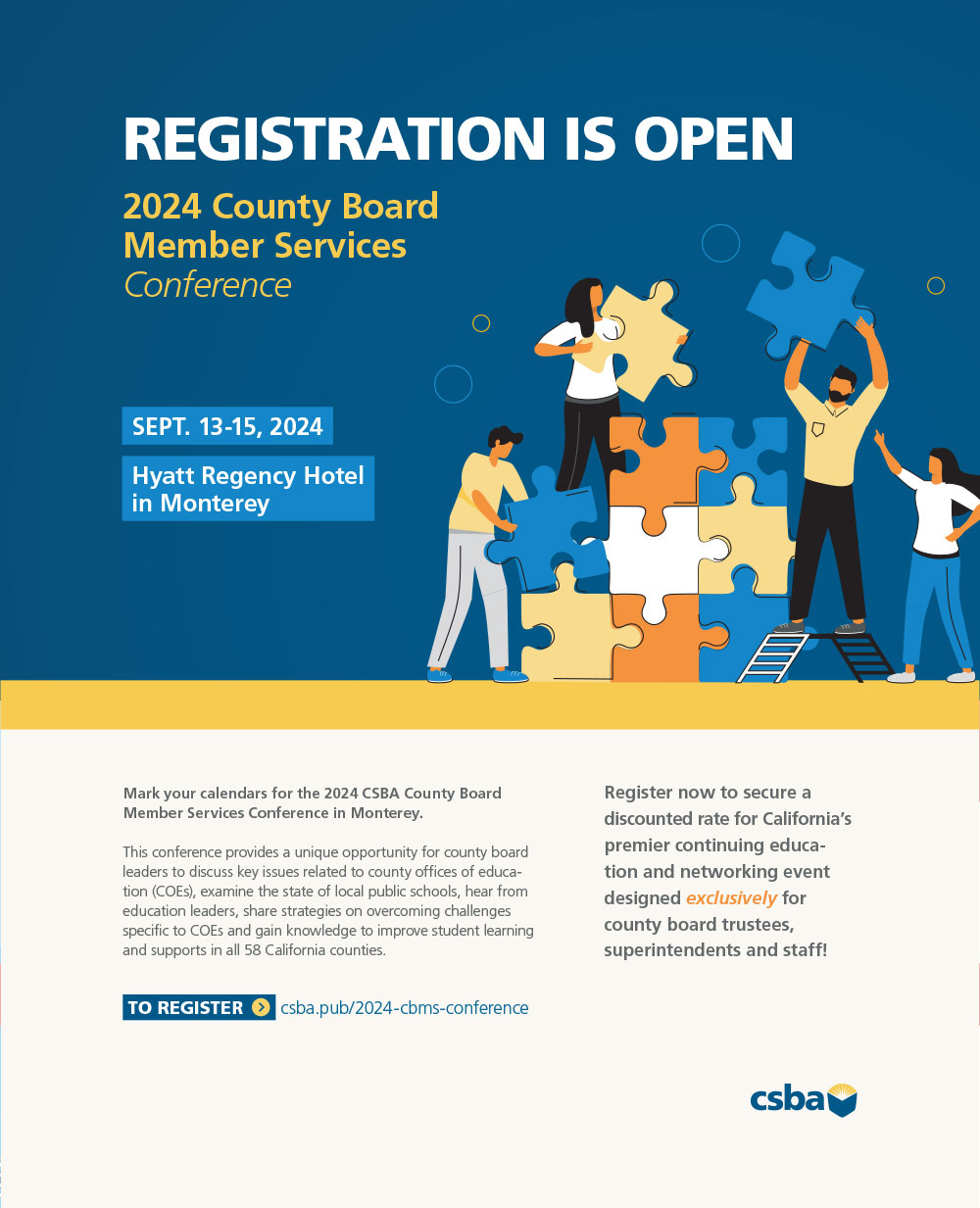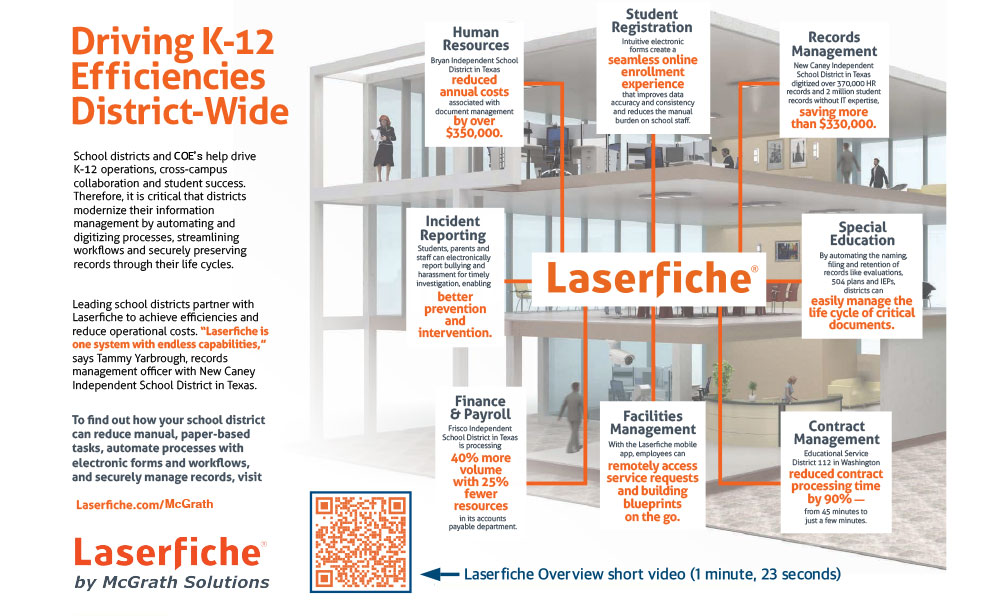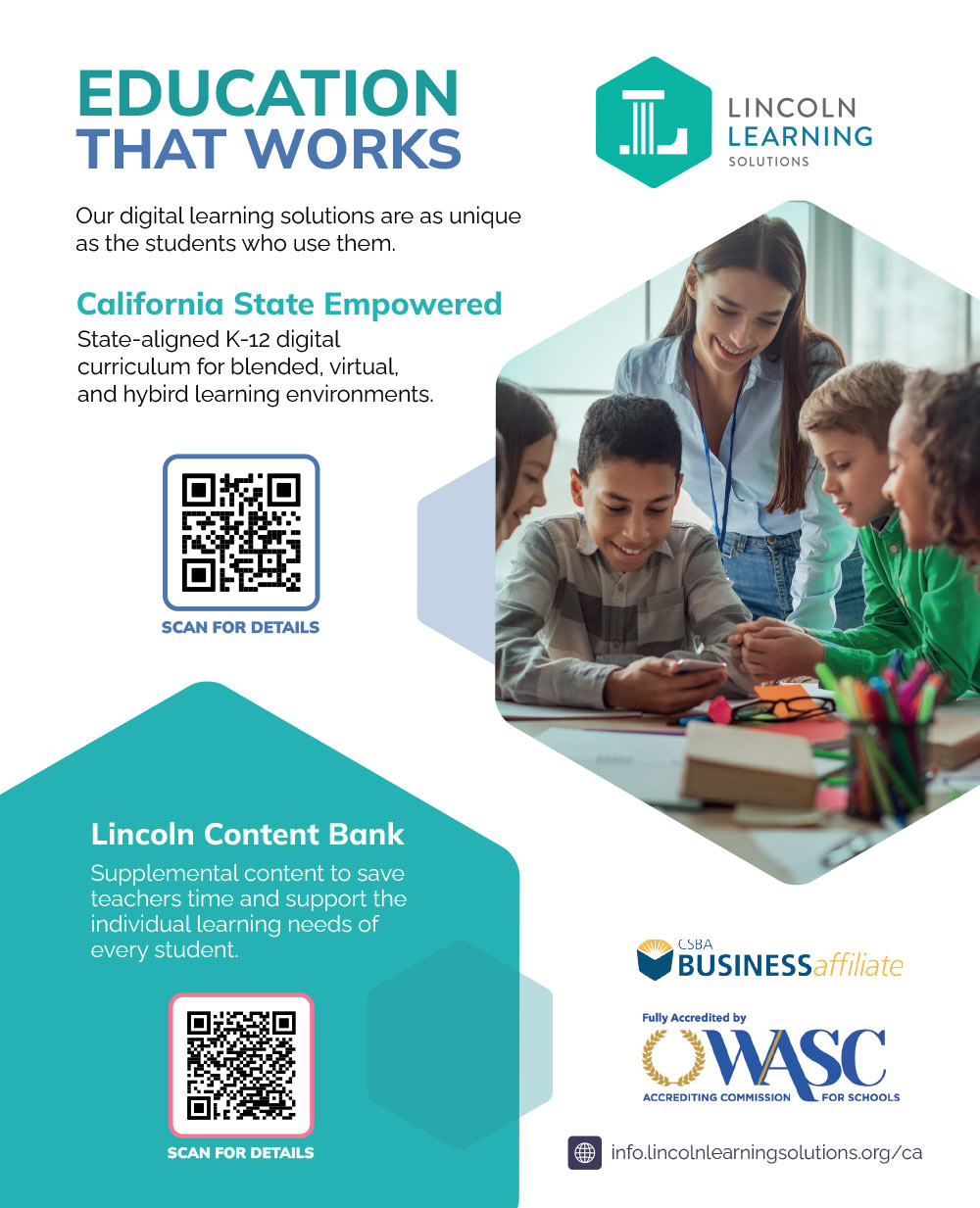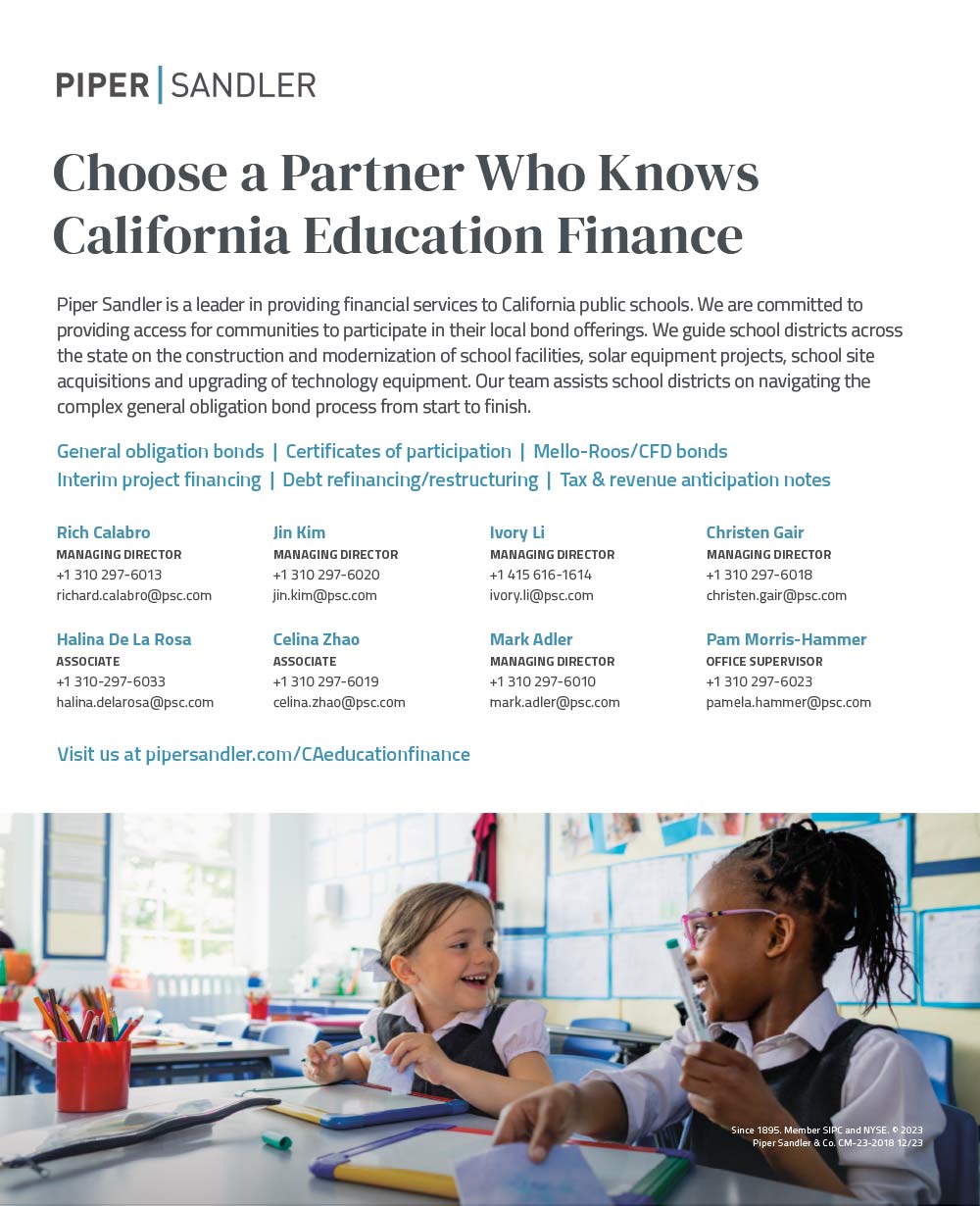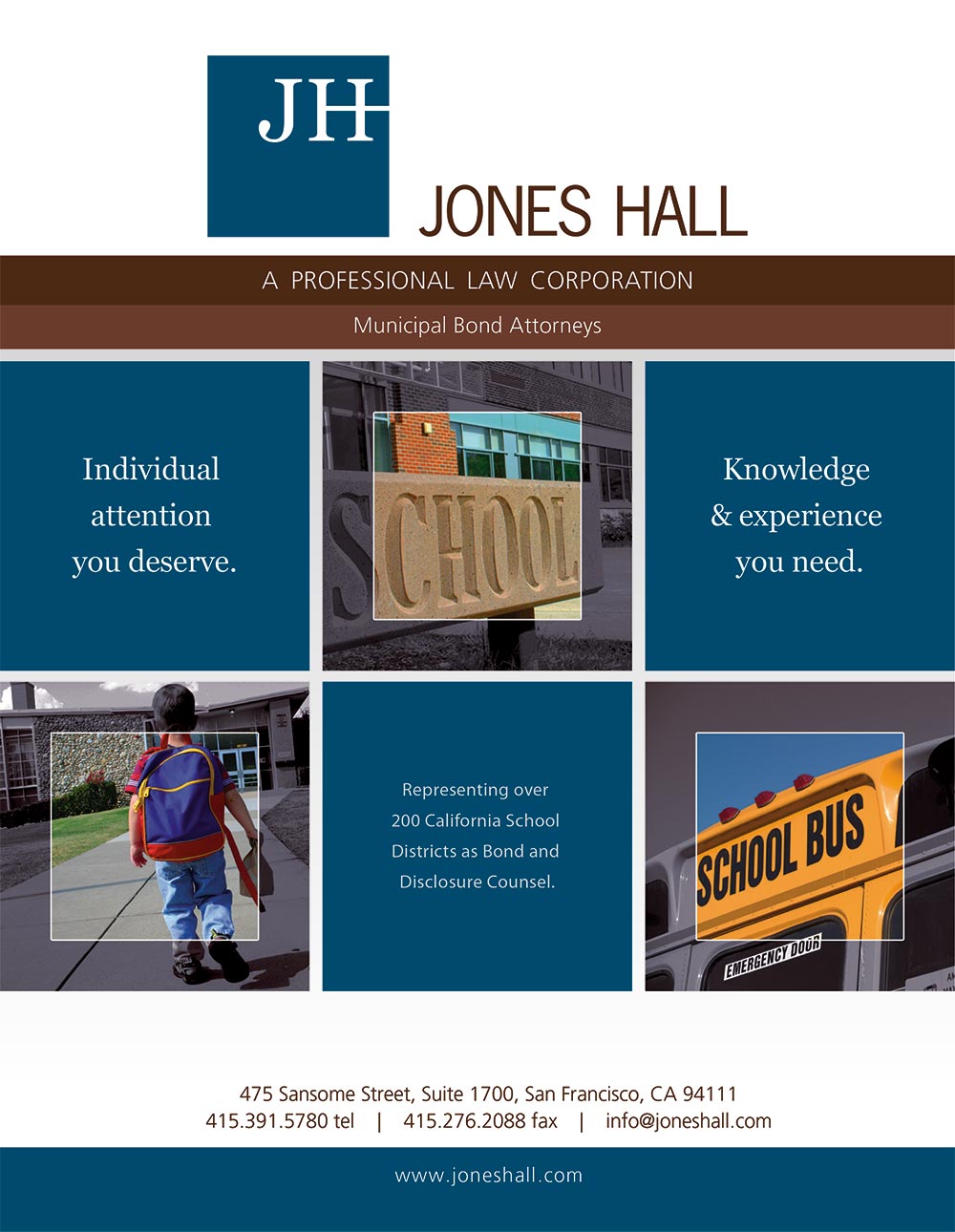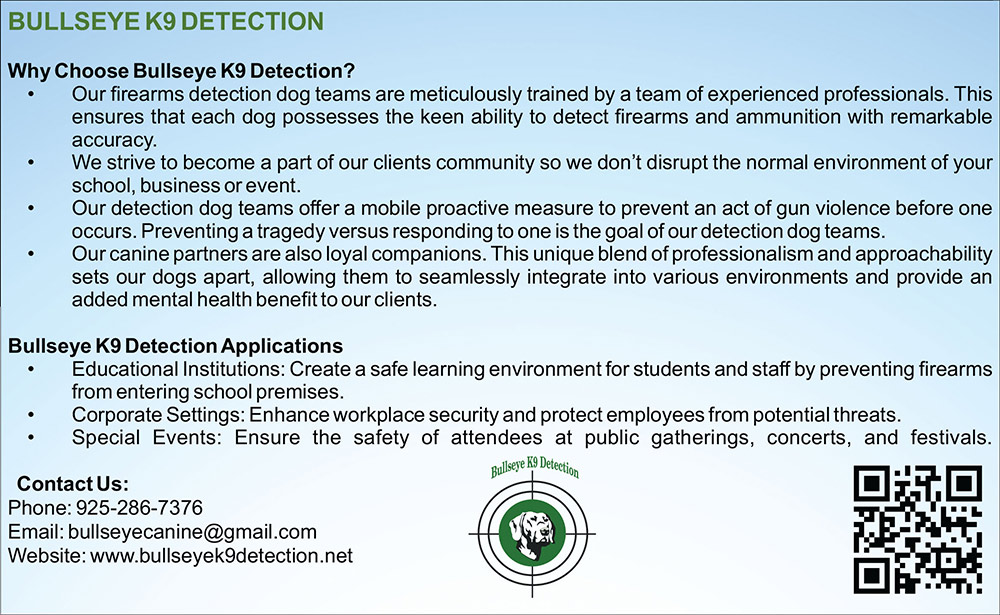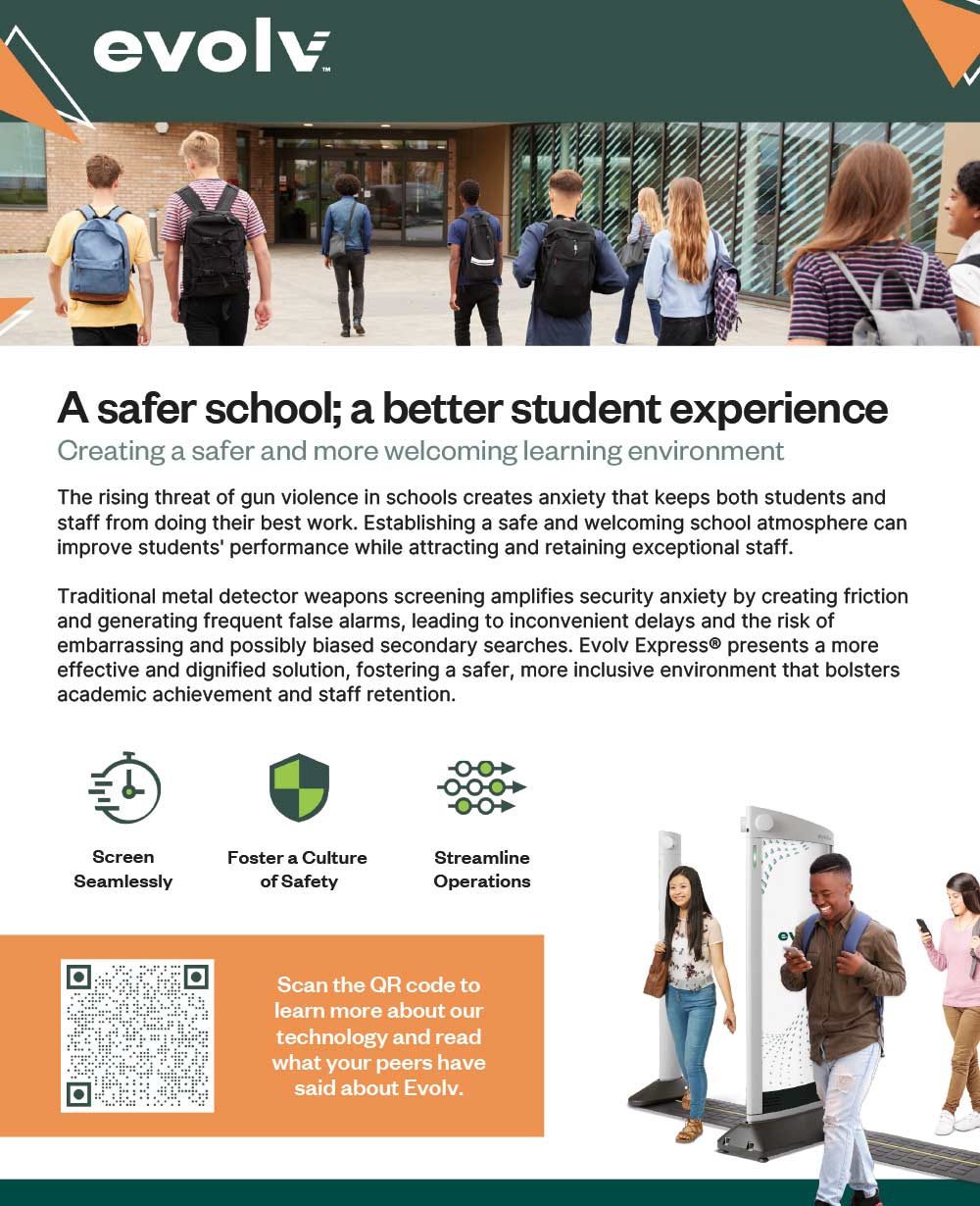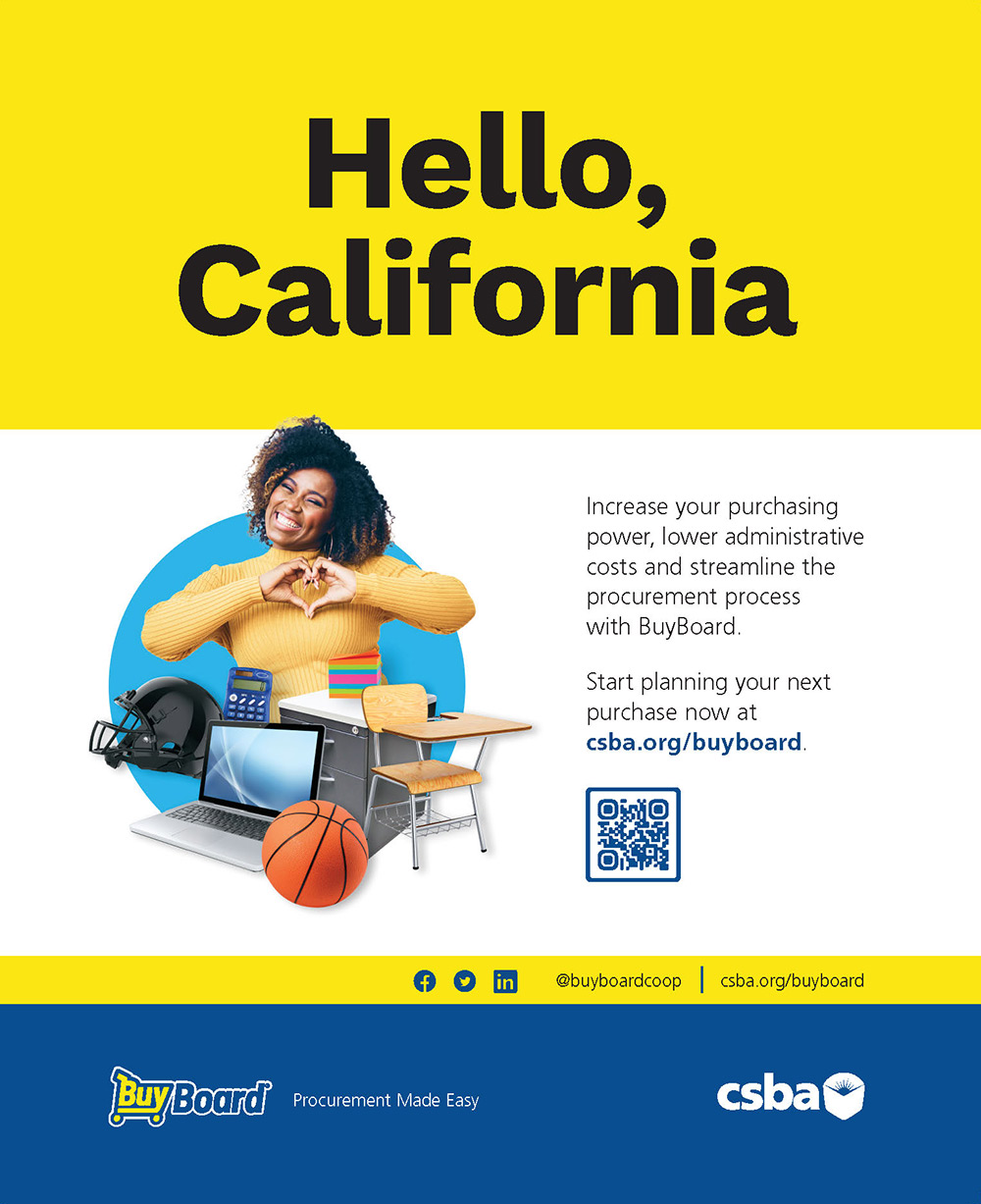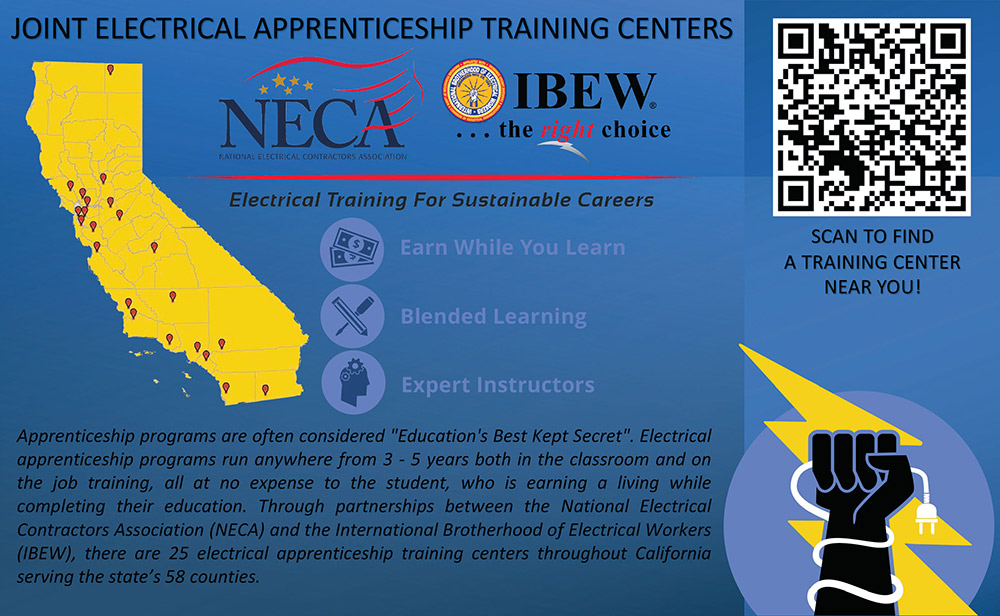
Spring 2024
The California School Boards Association is the essential voice for public education. We inspire our members to be knowledgeable leaders, extraordinary governance practitioners and ardent advocates for all students.
How the Local Control Funding Formula changed school funding in California
by Kimberly Sellery
How a well-intentioned law is being misused to burden LEAs
by Alisha Kirby
Matt Navo, executive director of the California Collaborative for Educational Excellence
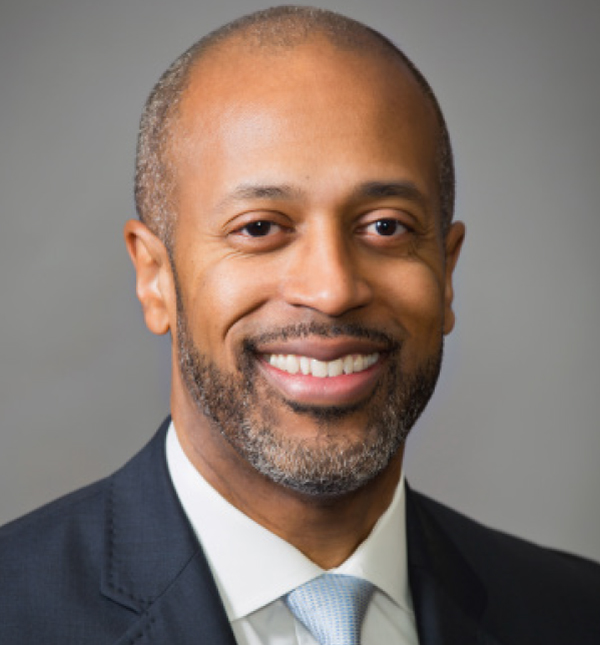
CEO’s note
he 10th anniversary of the Local Control Funding Formula (LCFF) is upon us, and its resilience and flexibility are in the spotlight now, more than ever. The long run of robust state budgets seems to be over and for the first time in more than a decade, lean years may lie ahead. Twelve years after the negotiations that led to LCFF, few legislators remain who took part in its development and understand the reasons for its creation.

Clearly it was time for a change, but LCFF contained a broader philosophical goal than simply increasing school funding. The larger idea behind LCFF was to streamline the complex school funding allocation methodology and boost education funding, while at the same time providing greater resources for the state’s high-need students and provide more local flexibility in determining how best to support those students — Gov. Jerry Brown’s philosophy of “subsidiarity.”

CSBA 2024 Board of Directors
Region 1, Ukiah USD
Region 2, Redding ESD
Region 3, Napa Valley USD
Region 4, Eureka Union SD
Region 5, Redwood City ESD
Region 6, Washington USD
Region 7, San Ramon Valley USD
Region 8, Ripon USD
Region 9, Scotts Valley USD
Kathy Spate
Region 10, Caruthers USD
Region 11, Ventura USD
Region 12, Sierra Sands USD
Region 15, Huntington Beach Union HSD
Region 16, Silver Valley USD
Region 17, Oceanside USD
Region 18, Riverside COE
Region 20, Mountain View Whisman SD
Region 21, Los Angeles USD
Region 22, Palmdale SD
Helen Hall
Region 23, Walnut Valley USD
Region 24, South Whittier ESD
Director-at-Large African American, Folsom-Cordova USD
Director-at-Large American Indian, Needles USD
Director-at-Large Asian/Pacific Islander, Cupertino Union SD
Director-at-Large County, Ventura COE
Director-at-Large Hispanic, Alameda COE
John McPherson
Interim Non-voting Director, Monterey COE
Region 1, Ukiah USD
Region 2, Redding ESD
Region 3, Napa Valley USD
Region 4, Eureka Union SD
Region 5, Redwood City ESD
Region 6, Washington USD
Region 7, San Ramon Valley USD
Region 8, Ripon USD
Region 9, Scotts Valley USD
Region 10, Caruthers USD
Region 11, Ventura USD
Region 12, Sierra Sands USD
Region 15, Huntington Beach Union HSD
Region 16, Silver Valley USD
Region 17, Oceanside USD
Region 18, Riverside COE
Region 20, Mountain View Whisman SD
Tanya Ortiz Franklin
Region 21, Los Angeles USD
Region 22, Palmdale SD
Region 23, Walnut Valley USD
Region 24, South Whittier ESD
Director-at-Large African American, Folsom-Cordova USD
Director-at-Large American Indian, Needles USD
Director-at-Large Asian/Pacific Islander, Cupertino Union SD
Director-at-Large County, Ventura COE
Director-at-Large Hispanic, Alameda COE
John McPherson
Interim Non-voting Director, Monterey COE
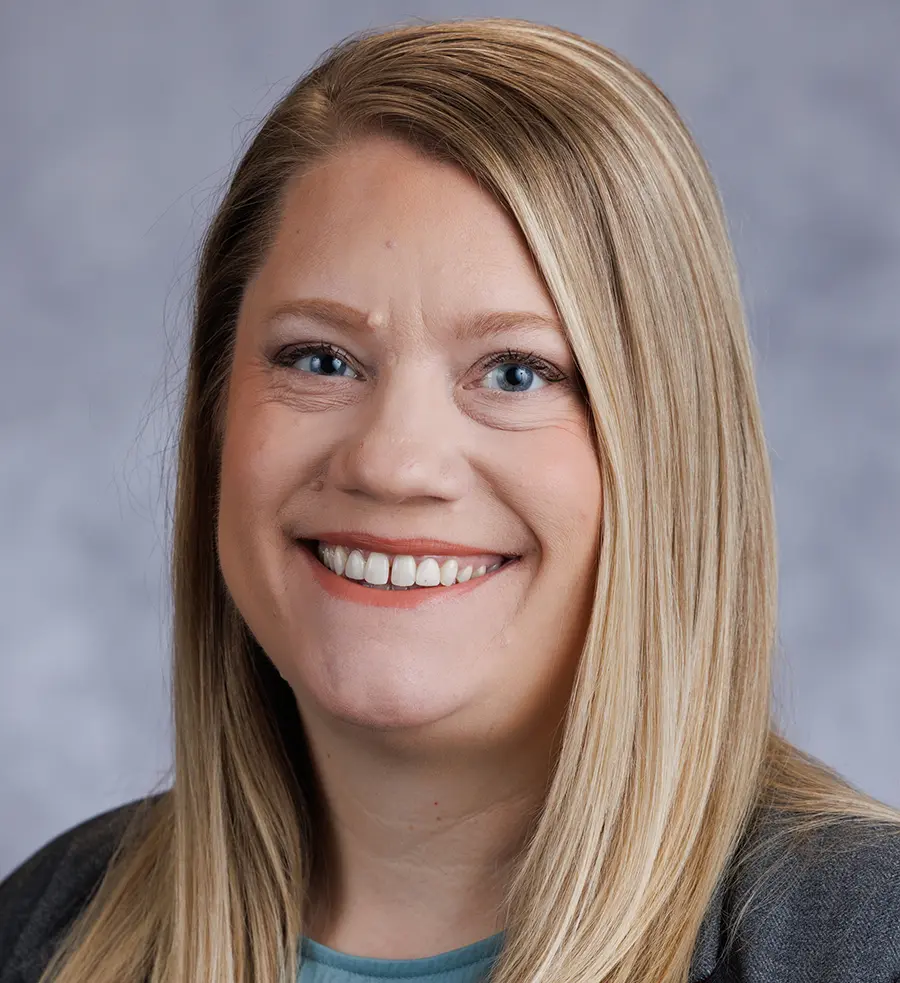
legal insights
Current legal challenges for schools explained
ost-COVID, attempting to predict the potential legal issues that will arise for TK-12 public education in any given year might be considered a fool’s errand. The myriad issues that affect public education are before every court in the nation, numerous times per year, with resulting decisions that can be contradictory even in the same courthouse.

It is somewhat easier to predict legislative changes in California because of the makeup of its Legislature, but without that partisan alignment courts are much tougher to crack. However, as I begin my tenure as CSBA’s General Counsel, I will endeavor to use my almost 20 years of experience in education law to help CSBA’s members navigate the ever-changing legal landscape. In that spirit, summarized below are some of the most significant legal issues likely to affect California school districts and county offices of education in 2024.

Chief Information Officer
Troy Flint, tflint@csba.org
Editorial Director
Kimberly Sellery, ksellery@csba.org
Staff Writers
Heather Kemp, hkemp@csba.org
Alisha Kirby, akirby@csba.org
Director of Graphic Design and Branding
Kerry Macklin, kmacklin@csba.org
Senior Graphic Designer
Amanda Moen, amoen@csba.org
Circulation and Advertising
csba@csba.org
Albert Gonzalez, Santa Clara USD
President-elect
Bettye Lusk, Monterey Peninsula USD
Vice President
Debra Schade, Solana Beach SD
Immediate Past President
Susan Markarian, Pacific Union ESD
CEO & Executive Director
Vernon M. Billy
California Schools (ISSN 1081-8936) is published quarterly by the California School Boards Association, Inc., 3251 Beacon Boulevard, West Sacramento, CA 95691, (916) 371-4691. $2 of CSBA membership dues goes toward the subscription to California Schools magazine for each board member and superintendent. The subscription rate for each CSBA nonmember is $20. Periodicals postage paid at West Sacramento, CA and at additional mailing office. Postmaster: Send address changes to California Schools, 3251 Beacon Blvd., West Sacramento, CA 95691.
Articles submitted to California Schools are edited for style, content and space prior to publication. Views expressed are those of the authors and do not necessarily represent CSBA policies or positions. Articles may not be reproduced without written permission of the publisher. Endorsement by CSBA of products and services advertised in California Schools is not implied or expressed.

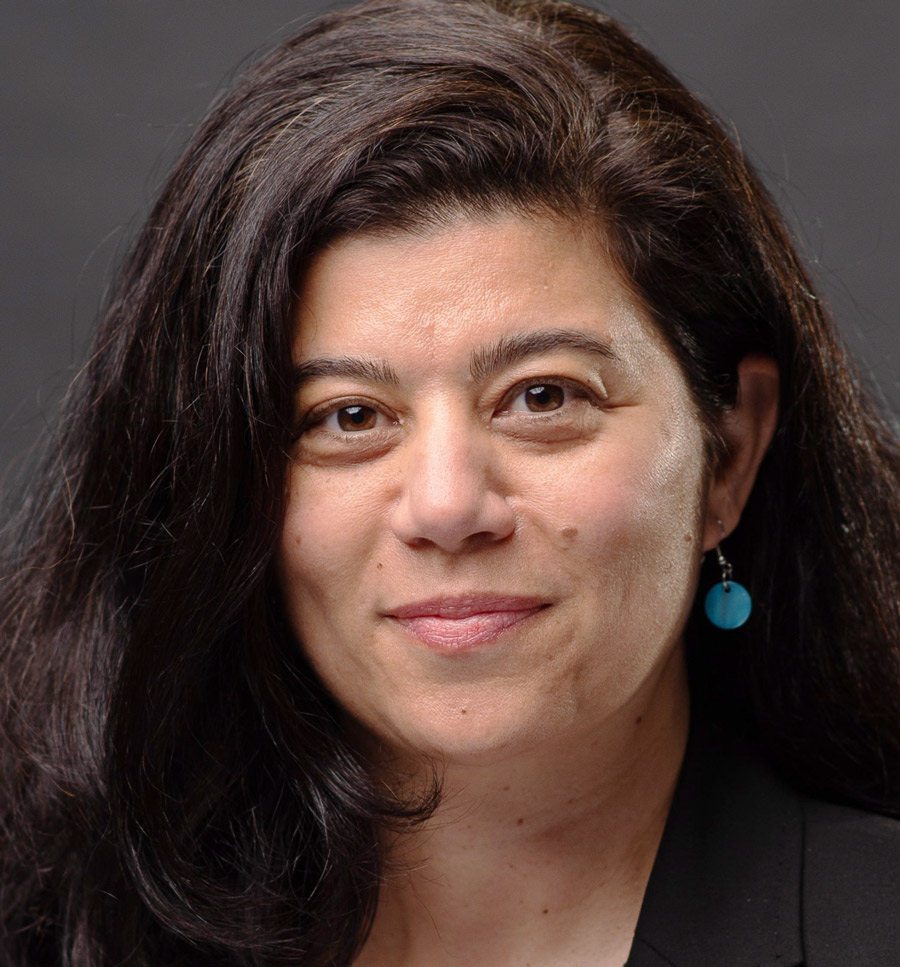
By Angela Asch
Editor’s note: This issue debuts CSBA’s new regular column, Research Spotlight. In line with the association’s strategic priorities,the Research and Education Policy Development team will share new research findings with CSBA members in each issue.
New CSBA resources will support school boards, students, staff and communities
overnance teams play a critical role in fostering safe environments for students and staff. An integral part of that role is being able to contribute to informed decisions about school safety issues.
The board’s role in adopting and monitoring policies provides an opportunity to establish guidelines that impact the safety of students and staff. From reviewing data on school climate to analyzing the effectiveness of safety programs, policies and curricula to allocating funds to train staff and practice safety measures, school safety work is complex and covers the gamut. School safety is a school, local educational agency and communitywide collaborative effort.
To that end, CSBA’s Research and Education Policy Development Department has been developing and revising school safety resources for governance teams in support of your role and work in providing timely and educated decisions on school safety practices, procedures and policies.

I was elected to Livermore school board in November 2020. I have been active in our schools and in my community for many years, but it was the social unrest in the summer of 2020 and challenges of the pandemic that motivated me to try for a seat at the decision-making table. I had two children in the school district, and it was time for me to get off the sidelines and bring the skills and training I had developed in the policy world to help solve the problems facing our schools.
I am proud of the way my district has focused on youth mental health. Just before the pandemic, we started a wellness center at one of our high schools, staffed by a credentialed teacher and many trained student volunteers. It has been so successful that it’s now being replicated at schools of all grade levels throughout our district. In addition, we applied for and received a grant to hire dedicated behavioral counselors at all of our elementary schools, while we continue to train hundreds of students and adults in youth mental health first aid.
Through my community activism, I have developed many connections and learned a lot about how things work. It has been so fulfilling to now serve in a role where I can bring that knowledge and those contacts to solve problems for our students and families. In our politically divisive times, I have worked hard to listen to people with differing views to find solutions and make progress on challenging issues. When we focus on the needs of our students and use them as our north star, we are led to the answers we seek.
I have a background in public policy and have worked at every level of government, so I have a deep understanding of the policymaking process and how to use policy as a tool to solve real world problems. In addition, I was an immigrant English learner as a child, then a first-generation college student who ended up attending the best universities, with the opportunities that came after, all thanks to my public school education. My personal experience makes me ever more committed to making sure our schools can open doors for all of our students the way my schools did for me.
This may be a trite answer, but my parents were and still are the inspiration for everything I do in life. My brothers and I were born into an authoritarian country under martial law. My parents wanted their children to have opportunities they didn’t have, particularly a college education. They gave up good jobs and left all of our family behind to emigrate with their three young children to a country where they didn’t speak the language or know the culture. They worked long hours six days a week to make a living. Seeing daily the sacrifices of our parents, my brothers and I could do nothing but work just as hard to realize the dreams our parents had for us.


I was elected to Livermore school board in November 2020. I have been active in our schools and in my community for many years, but it was the social unrest in the summer of 2020 and challenges of the pandemic that motivated me to try for a seat at the decision-making table. I had two children in the school district, and it was time for me to get off the sidelines and bring the skills and training I had developed in the policy world to help solve the problems facing our schools.
I am proud of the way my district has focused on youth mental health. Just before the pandemic, we started a wellness center at one of our high schools, staffed by a credentialed teacher and many trained student volunteers. It has been so successful that it’s now being replicated at schools of all grade levels throughout our district. In addition, we applied for and received a grant to hire dedicated behavioral counselors at all of our elementary schools, while we continue to train hundreds of students and adults in youth mental health first aid.
Through my community activism, I have developed many connections and learned a lot about how things work. It has been so fulfilling to now serve in a role where I can bring that knowledge and those contacts to solve problems for our students and families. In our politically divisive times, I have worked hard to listen to people with differing views to find solutions and make progress on challenging issues. When we focus on the needs of our students and use them as our north star, we are led to the answers we seek.
I have a background in public policy and have worked at every level of government, so I have a deep understanding of the policymaking process and how to use policy as a tool to solve real world problems. In addition, I was an immigrant English learner as a child, then a first-generation college student who ended up attending the best universities, with the opportunities that came after, all thanks to my public school education. My personal experience makes me ever more committed to making sure our schools can open doors for all of our students the way my schools did for me.
This may be a trite answer, but my parents were and still are the inspiration for everything I do in life. My brothers and I were born into an authoritarian country under martial law. My parents wanted their children to have opportunities they didn’t have, particularly a college education. They gave up good jobs and left all of our family behind to emigrate with their three young children to a country where they didn’t speak the language or know the culture. They worked long hours six days a week to make a living. Seeing daily the sacrifices of our parents, my brothers and I could do nothing but work just as hard to realize the dreams our parents had for us.
Would you like to participate in an upcoming Member Profile? Contact editor@csba.org.
class act Best practices in action
class act
Best practices in action

class act
Best practices in action

One COE’s efforts to expand and improve supports for students and staff in crisis

In survey after survey, education leaders, teachers, families and even students themselves have repeatedly ranked youth mental health as a top concern in recent years — both before and after the onset of the COVID-19 pandemic.
Following a personal or school-based crisis, the need for immediate, targeted services is critical for supporting young people and keeping them on track. That’s where Orange County Department of Education’s Crisis Response Network (CRN) comes in. Since 2008, this Golden Bell Award-winning program has offered support to school communities experiencing traumatic events.

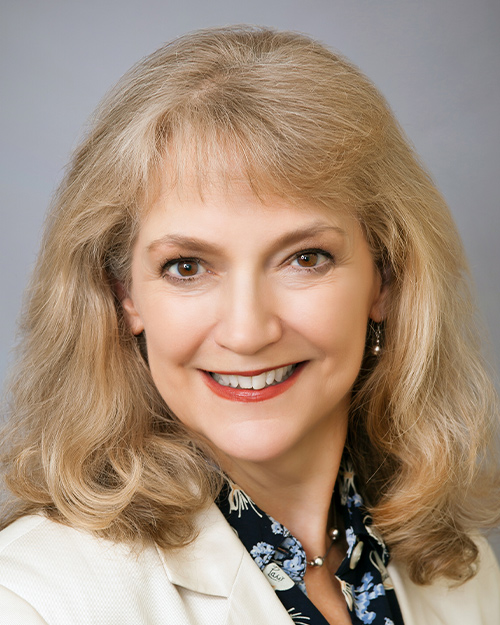
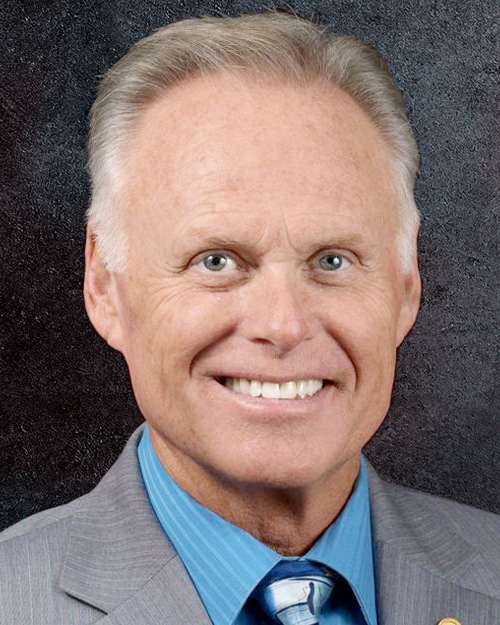
Maximizing student success
As dedicated stewards of education, school board members play a pivotal role in shaping their local educational agency’s success trajectory. One of the most impactful tools at their disposal is the annual evaluation of the district’s superintendent. This article will explore the significance of superintendent evaluations, the symbiotic relationship between board members and superintendents and the critical role this collaboration plays in supporting Local Control and Accountability Plan (LCAP) goals.
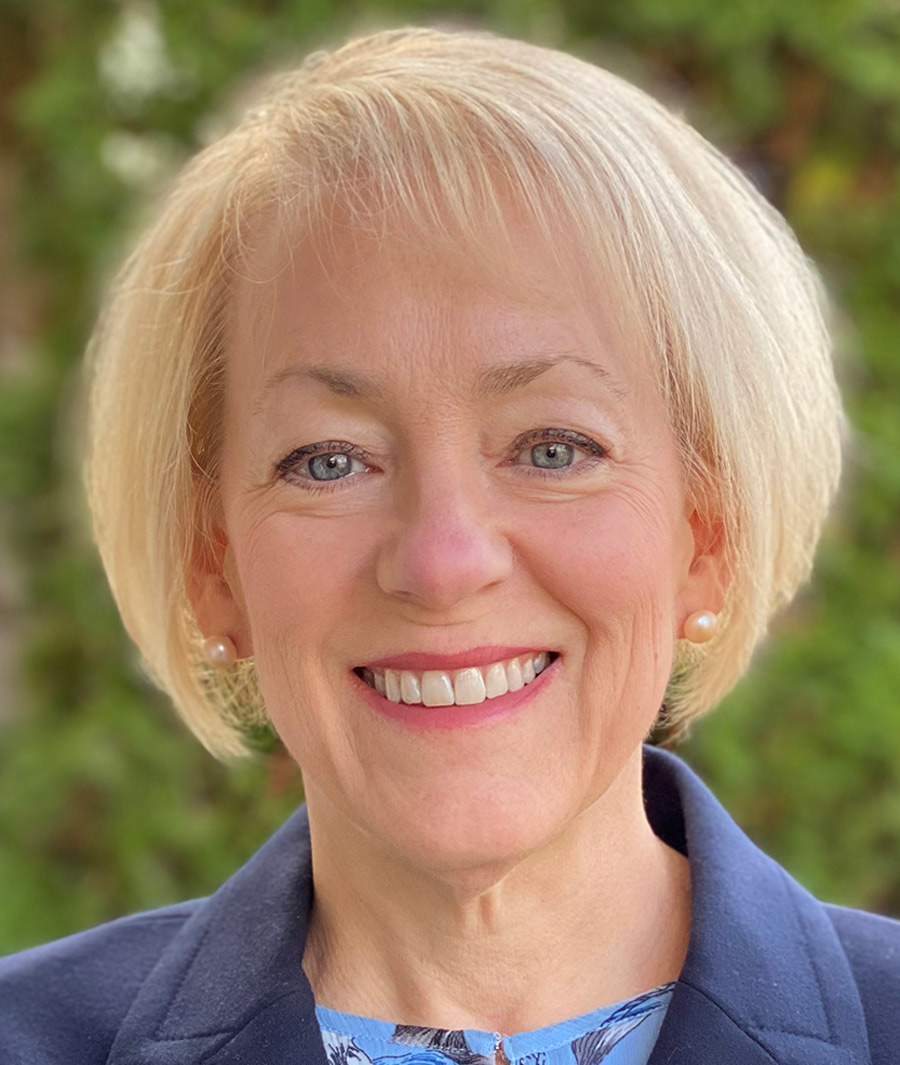
By Becky Sullivan
Improving literacy rates through systemic instructional capacity building
he Sacramento County Office of Education’s (SCOE) journey to improve literacy rates in California is a compelling story of coherent systemic change, collaboration and evidence-based intervention that began in December 2020 and extends into the present.
This narrative unfolds against the backdrop of the Early Literacy Support Block (ELSB) grant, a program aimed at addressing the state’s lowest-performing schools’ literacy rates and among students in the most challenging circumstances.
The catalyst for this initiative was a lawsuit filed on behalf of California students who struggled with reading, leading to the allocation of $50 million to establish the ELSB grant. SCOE was chosen through a competitive grant process to lead this effort, targeting 75 schools with the lowest performance in English language arts as identified in 2019. The ambition was not just to improve literacy but to enact systemic change that addressed the root causes of low literacy rates. Working closely with each school, SCOE developed a coherence framework to help recognize the interdependence of its culture, systems and structures, resources, stakeholder relationships and environment. This understanding of how these various aspects reinforce one another brought clarity to supporting the implementation of an improvement strategy.

from the field
Rural America
s a former leader in a large, urban district, I did not know what I was stepping into when I entered the world of education in rural America. I thought I knew what to expect, as I had graduated from San Pasqual Valley Unified School District.
The area was familiar, I would know some of the people, and my greatest excitement would be seeing the faces of those I attended school with in the faces of our current students. Really though — I had no idea. San Pasqual Valley is situated on the borders of Arizona and Mexico and encircled by the Quechan (Kwat-san) Indian Reservation, globally known as the Fort Yuma Indian Reservation. We are located in Winterhaven, where the Colorado River separates Arizona and California. Land donation from the Quechan Tribe in the 1950s allowed San Pasqual Valley USD to be formed. San Pasqual Valley now serves 602 PK-12 students as well as an adult school.
The reality of rural districts is that we must make sure we are serving all populations while adjusting for service scarcity due to geographic isolation and policies, rules or regulations.
of LCFF
Only slightly better — and miles from passing — is the “D” grade the state receives for funding adequacy, citing that California spent about $1,760 less than the national average per pupil and ranks 33rd among the 50 states and the District of Columbia. And the state is not trending in the right direction for education — California actually spent a smaller percentage of its gross domestic product on education in 2020 than in 2008 — 2.98 percent versus 3.39 percent, respectively.



Supporting students experiencing homelessness
By Heather Kemp

An increase from 171,714 (2.9 percent) in 2022, this often overlooked and undercounted student group is one of the most in need of support both academically and personally, and local educational agencies such as Long Beach Unified School District, Sacramento City USD, Wheatland Union High School District and San Diego County Office of Education are answering the call.
How a well-intentioned law is being misused to burden LEAs
By Alisha Kirby
Public
Records
Act

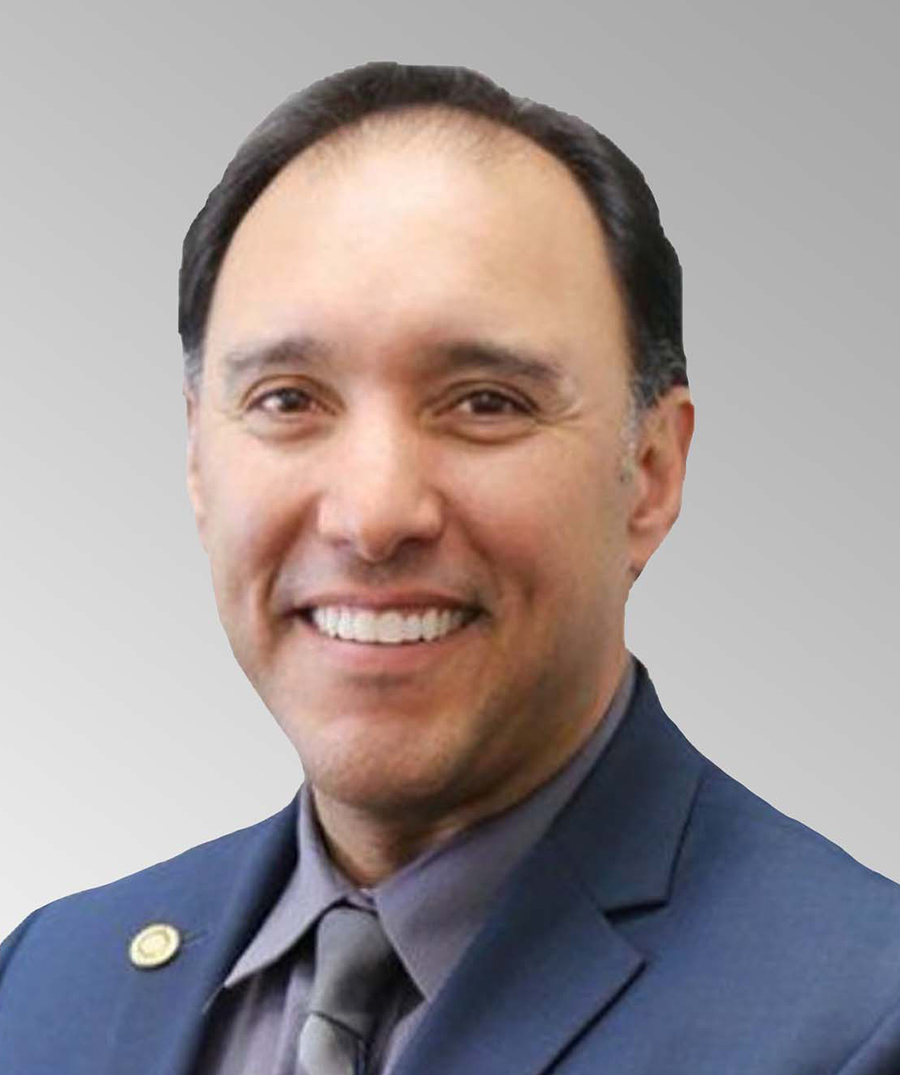

For me, every time we think of a challenge, a problem or a dilemma that we have, I think of it through the lens of my experiences as an LEA superintendent. And I think that that application helps me in how to support the team in doing work when they may not have that same experience. We have a really experienced team. For example, on our executive team, you have Michelle Magyar who has served in various state-level roles, including with the State Board. You have Dr. Stephanie Gregson, who was deputy director of the California Department of Education. You have Dr. Chris Hartley, who was Humboldt County superintendent. You have Sujie Shin who’s been with the CCEE since its inception. They and their teams are incredibly talented and experienced, and we all bring a different lens to a challenge or dilemma. Stephanie brings her CDE lens, Chris brings his county office lens, Sujie brings her data lens, Michelle brings her statewide lens, and I bring the LEA lens, and then together we are able to formulate possible solutions in a way that I think is constructive and helpful to the field.

Thanks for reading our Spring 2024 issue!
